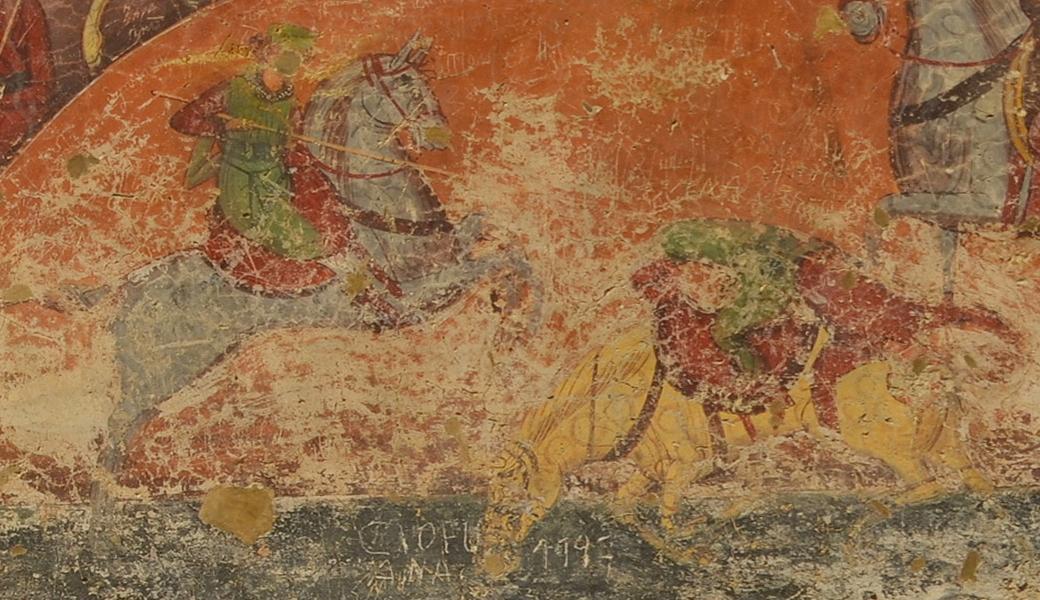|
|
Moldavian Horseman
an exterior wall painting on the monastery at Moldovita, Bucovina, Romania.

The predominantly gold and deep blue paintings on the exterior walls were completed in 1537.
The large and vivid Siege of Constantinople highlights the murals.
The Siege of Constantinople murals were inspired by a poem dedicated to the Virgin Mary
in thanksgiving for her intervention in saving the city of Constantinople from an Avar & Persian attack in A.D. 626, the poem is also painted on a mural.
In a wonderful political spin, considering the Ottoman threat to Moldavia in the 1500s,
the Siege on the walls of Moldovita Church depicts the enemy as turbaned Turks rather than Avars or Persians.
Referenced on p47, D.Nicolle, A.McBride - MAA 195 Hungary and the Fall of Eastern Europe 1000-1568
'Christian horseman slaying Ottoman rider', Fall of Constantinople, Moldavian wall-painting 1532-37.
The painted account of the Fall of Constantinople at Moldovita is one of the earliest Balkan illustrations of this event,
made by men who certainly knew Ottoman troops; they may even have had access to illustrations of the last defenders of Byzantium.
This particular horseman at the bottom of the main picture could symbolise Moldavia's continuing struggle as champion of Orthodox Christianity against the Muslim Turks.
If so, then he almost certainly reflects current Moldavian light cavalry hussar styles (in situ exterior of Monastery Church, Moldovita, Romania).
Back to the full image of the Siege of Constantinople, an exterior wall painting on the monastery at Moldovita, Bucovina, Romania.
|

